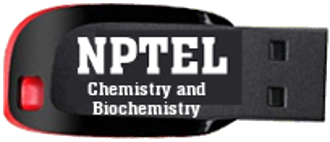NOC:Circular Dichroism (CD) and Mossbauer Spectroscopy for Chemists

Media Storage Type : 32 GB USB Stick
NPTEL Subject Matter Expert : Prof. Arnab Dutta
NPTEL Co-ordinating Institute : IIT Bombay
NPTEL Lecture Count : 62
NPTEL Course Size : 3.7 GB
NPTEL PDF Text Transcription : Available and Included
NPTEL Subtitle Transcription : Available and Included (SRT)
Lecture Titles:
Lecture 1 - CD Spectroscopy: Introduction
Lecture 2 - Symmetry and Molecular properties
Lecture 3 - Symmetry elements - I
Lecture 4 - Symmetry elements - II
Lecture 5 - Symmetry and point groups - I
Lecture 6 - Symmetry and point groups - II
Lecture 7 - Point group determination tutorial
Lecture 8 - Chirality and point group - I
Lecture 9 - Chirality and point group - II
Lecture 10 - Chirality and point group - III tutorial
Lecture 11 - Chirality and biology - I
Lecture 12 - Chirality and biology - II
Lecture 13 - Chirality and biology - III
Lecture 14 - Chirality and biology - IV
Lecture 15 - Chirality and biology - V
Lecture 16 - Origin of chirality
Lecture 17 - The physical background of chiral response - I
Lecture 18 - The physical background of chiral response - II
Lecture 19 - The physical background of chiral response - III
Lecture 20 - The physical background of chiral response - IV
Lecture 21 - The physical background of chiral response - IV
Lecture 22 - The physical background of chiral response - V
Lecture 23 - The physical background of chiral response - VI
Lecture 24 - Circular Dichroism Spectra
Lecture 25 - Examples of Circular Dichroism - I
Lecture 26 - Examples of Circular Dichroism - II
Lecture 27 - Examples of Circular Dichroism - III
Lecture 28 - Examples of Circular Dichroism - IV
Lecture 29 - Applications of CD spectroscopy - I
Lecture 30 - Applications of CD spectroscopy - II
Lecture 31 - Applications of CD spectroscopy - III
Lecture 32 - Applications of CD spectroscopy - IV
Lecture 33 - Applications of CD spectroscopy - V
Lecture 34 - Applications of CD spectroscopy - VI
Lecture 35 - CD spectroscopy: Conclusion
Lecture 36 - Mössbauer Spectroscopy: Introduction
Lecture 37 - Mössbauer Spectroscopy Fundamentals - I
Lecture 38 - Mössbauer Spectroscopy
Lecture 39 - Mössbauer Spectroscopy Fundamentals - II
Lecture 40 - Mössbauer Spectroscopy Fundamentals - III
Lecture 41 - Mössbauer Spectroscopy Fundamentals - IV
Lecture 42 - Mössbauer Spectroscopy: Isomer shift - I
Lecture 43 - Mössbauer Spectroscopy: Isomer shift - II
Lecture 44 - Mössbauer Spectroscopy: Isomer shift - III
Lecture 45 - Mössbauer Spectroscopy: Quadrupolar splitting - I
Lecture 46 - Mössbauer Spectroscopy: Quadrupolar splitting - II
Lecture 47 - Mössbauer Spectroscopy: Applications - I
Lecture 48 - Mössbauer Spectroscopy: Applications - II
Lecture 49 - Mössbauer Spectroscopy: Applications - III
Lecture 50 - Mössbauer Spectroscopy: Data measurement
Lecture 51 - Mössbauer Spectroscopy: Applications - IV
Lecture 52 - Mössbauer Spectroscopy: Effect of ligands - I
Lecture 53 - Mössbauer Spectroscopy: Effect of ligands - II
Lecture 54 - Mössbauer Spectroscopy: Applications - V
Lecture 55 - Mössbauer Spectroscopy: Probing ferrocenes - I
Lecture 56 - Mössbauer Spectroscopy: Probing ferrocenes - II
Lecture 57 - Mössbauer Spectroscopy: Probing ferrocenes - III
Lecture 58 - Mössbauer Spectroscopy: Mixed valent complexes - I
Lecture 59 - Mössbauer Spectroscopy: Mixed valent complexes - II
Lecture 60 - Mössbauer Spectroscopy: Mixed valent complexes - III
Lecture 61 - Conclusion section: CD spectroscopy
Lecture 62 - Conclusion section: Mössbauer Spectroscopy

